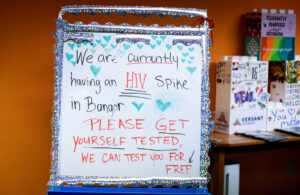
URGENT UPDATE: A labor and delivery nurse’s TikTok video revealing a critical communication blunder during childbirth is making waves online, racking up nearly 810,000 views since its release on September 15. Nurse Yancy Guzman, 30, shared her experience to highlight the importance of clear communication in medical settings, especially during such vulnerable moments.
In the video, Guzman recounts a moment when a patient misinterpreted medical jargon during labor. While assessing the situation, Guzman described the woman as having “grossly ruptured,” a clinical term meaning she had a significant amount of amniotic fluid leaking. The patient, however, mistook the term for an insult, leading to an immediate moment of confusion and distress.
Guzman explained, “I was mortified [and] embarrassed,” as she reflected on how a simple misunderstanding could drastically impact the patient’s birth experience. After quickly clarifying her statement, Guzman noted that the atmosphere shifted positively. “A quick apology and explanation completely changed the energy in the room,” she said.
The incident serves as a crucial reminder that medical terminology can often be misinterpreted by patients, who may not be familiar with the language used in healthcare settings. Guzman emphasized that it is essential for healthcare providers to communicate with sensitivity. “Normal words to those in the medical field can come across as rude and plain mean,” she stated.
According to the Mayo Clinic, when a woman’s water breaks before labor begins, it is referred to as prelabor rupture of membranes (PROM). Guzman described how the patient entered triage showing clear signs of rupture, as she was sitting in a puddle of amniotic fluid.
Guzman’s TikTok clip has resonated widely, with over 120,000 likes and numerous comments sharing similar anecdotes. One user recounted a time when a patient misread “SOB” in their medical chart, believing it to be a derogatory term. Another shared a humorous incident involving a c-section bracelet labeled “nuts,” which turned out to refer to an allergy rather than a comment on their mental state.
The viral nature of this video underscores a growing awareness of the need for healthcare professionals to adapt their language to ensure patients feel safe and understood. Guzman concluded, “No matter a patient’s age, background, or language, it’s our responsibility to make sure they feel safe, understood, and confident in their care.”
As this story continues to circulate, it highlights the critical importance of effective communication in the medical field. Healthcare providers are encouraged to reflect on how their words can impact patient experiences, especially in high-stress situations like childbirth.
For those in the medical community and beyond, Guzman’s experience serves as a vital lesson in the power of language and empathy in healthcare.




